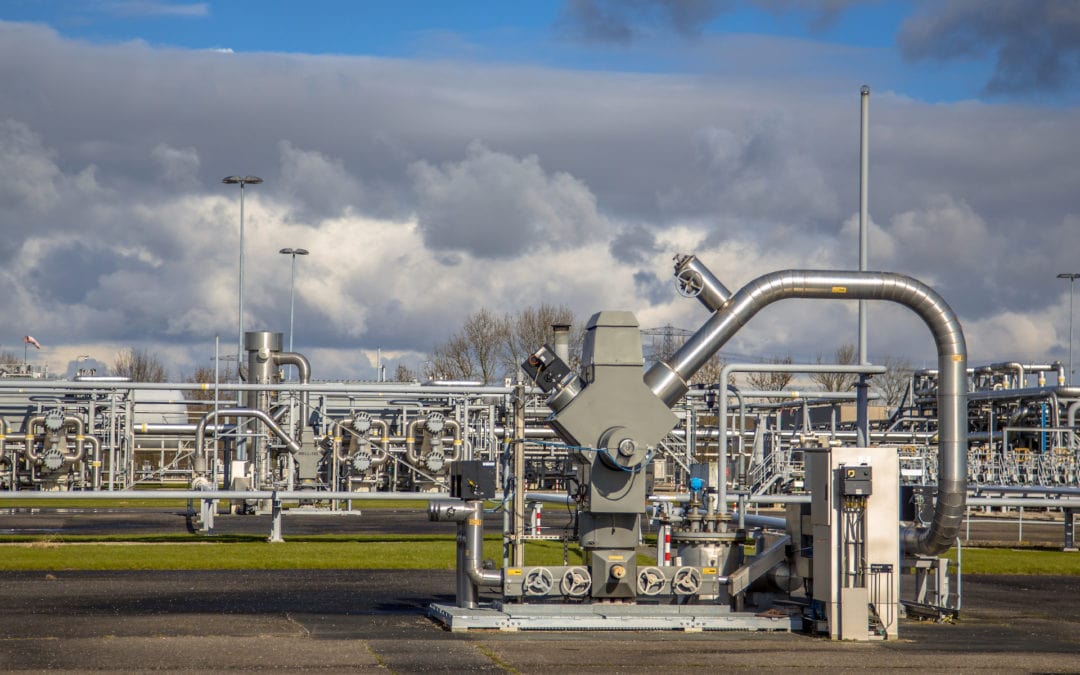Though they may perform similar services at the face level, plumbing and process piping are different systems and are designed to carry out very different tasks. Both are specifically designed for the products they will transport.
In the case of process piping, a complex system of carbon and stainless steel piping, pumps, valves, meters, reboilers, chillers and supports are required to effectively refine and safely transport materials where they need to go in a refinery. In many cases, the product being transported is hazardous, chilled and/or heated to extreme temperatures, containing explosive, toxic and acidic properties that degrade even the most resilient of piping materials over time.
Because of this, regular inspection and preventative maintenance is required. Common house plumbing, in most cases, uses a more straightforward way of transporting non-hazardous material through the use of fall (gravity) where the piping is constructed of Polyvinyl Chloride (PVC) and requires very little maintenance.
Industrial facilities and factories often need to move gases and liquids from one location to the next. Process piping is an effective and safe way to move gases and fluids through industrial or manufacturing facilities. This article will show you where and why process piping is used and where and when it’s the right piping for the job.
Where is Process Piping Found?
Process plant piping is found in industries and facilities where separating or mixing materials is common. These include the following industries:
– Petroleum refineries
– Oil and gas pipelines
– Pet food processing
– Pharmaceutical
– Chemical processing facilities
– Industrial facilities
– Food and beverage factories
This is just a short list of industries where materials or gases must be carefully transported and mixed. Generally, these systems convey chemicals under vacuum or pressure. There are some other places where process piping is used that are perhaps lesser well-known. These include:
– Semiconductor facilities
– Automotive plants
– Aircraft plants
– Water treatment operations
Reasons to Use Process Piping
Almost everyone understands that our society still relies on natural gas and oil, however, you may not understand the process of transporting these materials through a large facility. Most industrial facilities require professional process piping systems because it is the safest way to transport these gases and fluids across the facility.
For oil and gas refineries, making different oils is time-consuming, and having to remake products is labor-, time-, and cost-intensive. Accuracy and efficiency are essential in the petroleum industry. Fires can pose a huge safety issue but rest assured, our process piping systems are designed to contain or relieve maximum pressure where heat from a fire might be a problem. In other words, our designs are meant to withstand temperature extremes.
For peak efficiency in aerospace manufacturing, it is required that lubricants and fuel remain separated. Process piping is regularly installed in aerospace facilities to store materials and speed up manufacturing time. Water and fuel are kept separate, a mixture that could cause severe damage to airplane engines, spacecraft, and helicopters.
Differences In Process Piping and Plumbing Standards and Guidelines
Industry standards are different for plumbing than those for process piping. All plumbing systems require permits, inspections, and fees to be in order. Pipes for plumbing are typically made of copper or plastic based on corrosion factors, pressure, and other application requirements, and material options are limited because of strict regulations.
Regulations for process piping are different from regulations for power piping or plumbing systems. Process piping is not for fulfilling building services but as a support for a specific internal operation. Instead of municipal codes, the process piping system design and construction are governed by engineering standards.
Most of the time, process piping falls under the American Society of Civil and Mechanical Engineers (ASME) guidelines. Process piping is not exempt from federal oversight and must still follow United States Department of Labor Occupational Safety and Health Administration (OSHA) standards for safe operation. Some process piping systems require inspection, approval, and possible initial permitting.
ASME Process Piping Codes
The American Society for Mechanical Engineers (ASME) B31.3 Process Piping Code is the code used in North America that governs installation, inspection, design, fabrication, component standards, and testing of process piping. This code is also an American National Standard Institute (ANSI) standard and is a subset of the Pressure Piping ASME B31 code.
The Occupational Safety and Health Administration (OSHA) requires the ASME Code B31.3, mandated by law in Canada, for all process piping. Industrial insurance carriers for industrial facilities have also mandated this code. In facilities where nonmetallic piping is prevalent, there are many misunderstandings regarding the use of this code. The B31.3 code is the one that attorneys reference first when an injury or accident occurs involving process piping. This code is the only one that exists in the Western Hemisphere, and all materials are covered.
Hire a Well Trained Professional
We are only as good as the service we provide, and we go the extra mile to ensure all of our personnel are trained to industry standards. At NDT Tanknicians, we embrace the tough challenge set in place to be certified by entities such as the Environmental Protection Agency (EPA,) American Petroleum Institute (API,) Steel Tank Institute (STI,) American Society for Nondestructive Testing (ASNT,) and the National Association of Corrosion Engineers (NACE,) to name a few.
We’re capable of providing top-to-bottom coverage for all of your Storage Tank requirements; servicing a broad spectrum of clientele, both small and large. Our ability to streamline an entire project gives us an edge over the competition by providing our clients with the peace of mind and convenience of trusting one service provider to become familiar with all of their current and future needs, rather than half a dozen. This keeps costs to a minimum, quality control consistent and communication among crews seamless. Request a quote today.


Recent Comments